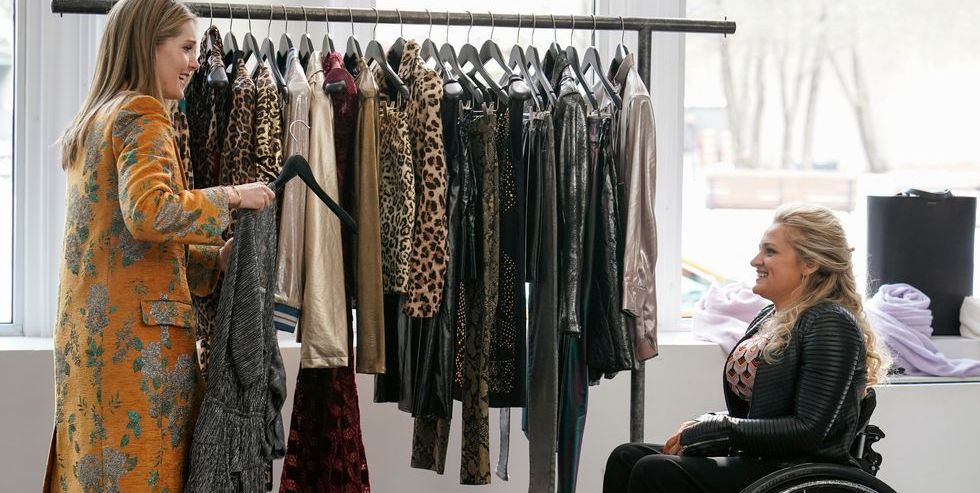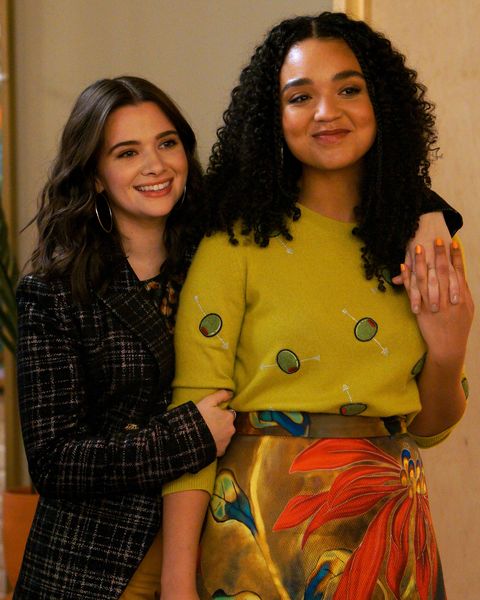My mother’s legend has it that one of my first words was “magazine.” I can’t confirm this, but I do have vague memories of demanding an issue from the rack at the grocery store, eager to flip through its glossy pages. As I grew older, I was just as excited to read the words inside those pages, devouring details of my favorite celebs’ personal lives like candy.
But every page that didn’t include an interview with one of my faves was a different story. As a wheelchair user with coordination limitations, I couldn’t try the latest eye shadow trend without first learning the tips and tricks to make application easier for me, a disabled woman. I couldn’t buy the designer dresses with zippers in the back or jeans with complicated buttons in the front; I need adaptive clothing options. And I didn’t just want advice for my first date—I needed someone who looked like me to tell the story of hers, so I could believe I would go on my own. Those stories didn’t exist then, but I held on to hope that one day, I would see a disabled woman on the cover of my favorite magazine, surrounded by headlines promising a whole book filled with content aimed at enriching my disabled life. I’m still holding on.
Since The Bold Type premiered in 2017, I’ve seen the show’s potential to increase disability representation in a way I never could have imagined growing up. The Freeform series follows the lives of women working at Scarlet, a fictional feminist women’s lifestyle magazine. Jane (Katie Stevens), Kat (Aisha Dee), and Sutton (Meghann Fahy) celebrate inclusivity and stand up for marginalized communities at work and in their personal lives. Including a character with a disability in this world would seamlessly contribute to authentic disability representation while also demonstrating to the publishing industry how to produce stories about disabled life in a meaningful, consistent way. When I heard that Tony winner Ali Stroker would be making an appearance on the show, I was ecstatic. Finally, The Bold Type representation I’d been dreaming of!
Except Stroker, who uses a wheelchair, doesn’t play a writer in this episode, titled “Leveling Up.” She plays Olivia, a no-nonsense representative for a fashion brand who is reluctant to give Sutton access to her client’s clothes. Though Olivia and Sutton are friends who’ve had more than a few drunken nights out together, the person for whom Sutton wants to borrow the clothes has a reputation for stealing, so Sutton must go on a winding journey to gain Olivia’s trust. The story isn’t centered on Olivia, and her disability isn’t mentioned at all.
On one hand, this is the type of disability representation I’ve been fighting for my whole career. The public needs to see disabled characters defined by factors other than their disabilities. We know Olivia is fun, fashionable, and can channel Miranda Priestly as needed. There was a time I thought representation like this was as genuine as it gets; according to The New York Times, just two of the top 10 shows on network TV—This Is Us and 9-1-1—cast characters with disabilities authentically in 2018. But Kate (Chrissy Metz) on the former and Christopher (Gavin McHugh) on the latter often have storylines with their disabilities at the center. To see Stroker in a small-screen role that doesn’t have anything to do with her disability is shocking in the best way.
But this isn’t the best The Bold Type can or should do. I’m a disabled entertainment and lifestyle journalist who covets a staff writing job at an outlet like Scarlet above all else, and the missed opportunities for more meaningful representation are so glaring, they taunt me through the screen. In “Leveling Up,” Jane is back from medical leave and ready to launch a brand-new vertical on feminism. That’s right, the innately feminist Scarlet is creating an additional section in its publication about the general theory that guides most of its stories. It makes no sense. So as refreshing as it is to see Stroker playing a character who is human before disabled, watching these storylines play out alongside each other indicates that The Bold Type, Scarlet, and all real-life women’s publications still undervalue the disability community. Our perspectives are not consistently integrated into important conversations about everyday life, and on TV, our storylines are either centered around our differences or those differences are completely ignored. But there’s a sweet spot in the middle of those extremes that unlocks a world of new stories that very few publications are telling right now. A Feminism vertical is wasted space where a Disability vertical could literally change the world.
The position of senior editor of Disabled Life at Scarlet has existed in my head since season 1. Jane couldn’t be the editor, and there is no real need for Olivia to be. Though Stroker is underused in the episode, Olivia should continue growling orders in her showroom office. There is room on The Bold Type—and every show—for more than one disabled character. The ideal candidate for the position is a disabled woman who is absolutely unrelenting when it comes to amplifying disabled writers’ voices, played by an actress like Tatiana Lee. Her job would be to help the entire disability community feel represented in mainstream media, and stories that fit into this vertical would be more universally applicable than you might think, from “How To Protest When You Can’t Attend A March” to “Recipes That Are Easy to Adapt” and, of course, “An Uncoordinated Guide To Applying Makeup.” We would spend a lot of time with the disability editor outside of work, which would give The Bold Type the opportunity to regularly explore topics like sex with a disability, ableism, and disability rights. And even though the projects the ladies of The Bold Type are working on are rarely the main focus of their storylines, we often meet interviewees or new writers, and these positions offer an easy way to include even more disabled actors and characters on the show.
The Bold Type has an opportunity to explore disabled life with a rare depth that could show media what it’s missing when it excludes or scarcely features disabled stories. It’s amazing that Stroker gets to play a character who evokes Miranda Priestly vibes before pity, but there are ways to tell nuanced stories about disability that inspire disabled viewers to live their lives to the fullest. I know 13-year-old me is still searching for so many answers. It makes me sad to have to beg a fictional disability vertical into existence. But if my plea works, it’s worth it.
This content is created and maintained by a third party, and imported onto this page to help users provide their email addresses. You may be able to find more information about this and similar content at piano.io


